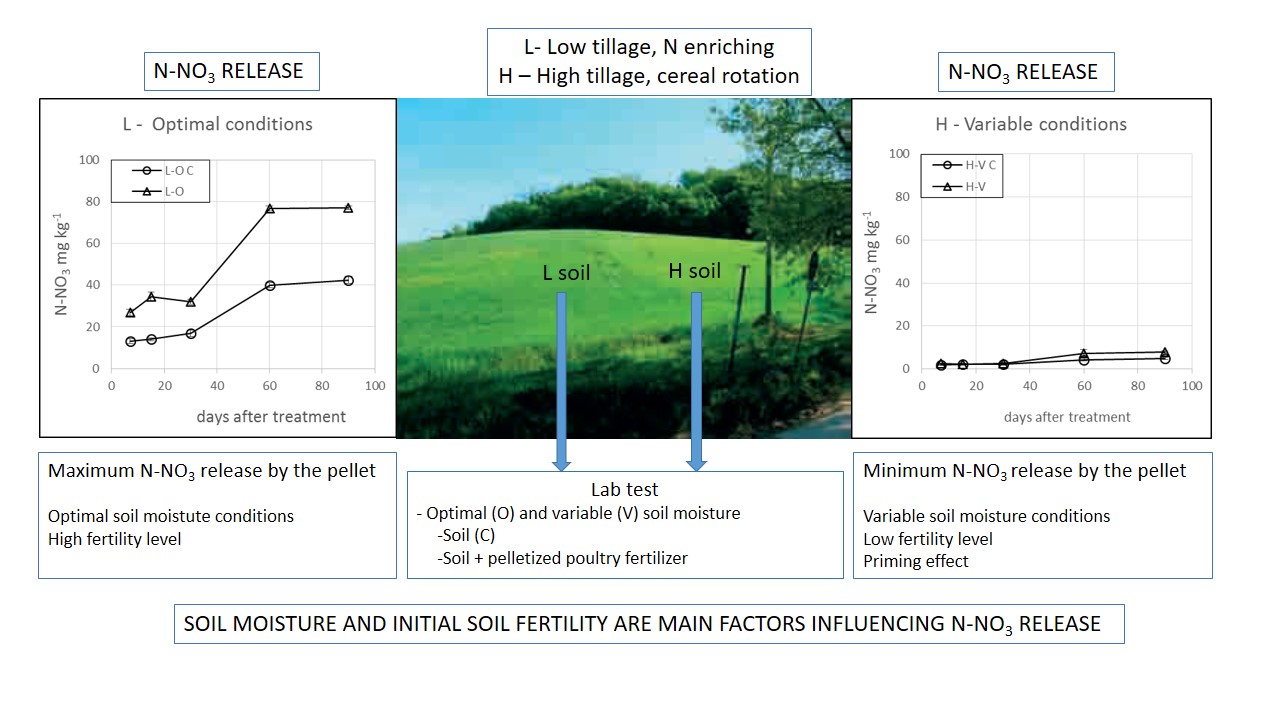Nitrogen release from pelletized poultry fertilizer in two soils: influence of soil moisture and microbial biomass
28/Jan/2022
ABSTRACT Nitrogen release from organic amendments, e.g., from organic agriculture, is a key process to raise soil fertility to sustain crop production in low environmental impact agroecosystems. This study aimed to investigate nitrogen release from a pelletized organic amendment containing poultry litter, guano and pot ale applied to soil from a field under two different management systems: an alfalfa-based crop rotation, enriched with N by the legume, under low-intensity tillage and a cereal-sunflower crop rotation under high-intensity tillage. Both sample […]
Chemical and Biochemical Properties of Oxisols after Sewage Sludge Application for 16 Years
01/Sep/2015
ABSTRACT The large production of sewage sludge (SS), especially in large urban centers, has led to the suggestion of using this waste as fertilizer in agriculture. The economic viability of this action is great and contributes to improve the environment by cycling the nutrients present in this waste, including high contents of organic matter and plant nutrients. This study evaluated the chemical and biochemical properties of Dystrophic and Eutroferric Latossolos Vermelhos (Oxisols) under corn and after SS application at different […]
Soil tillage systems and cover crops in organic production of common bean and corn. II – soil biological properties
01/Apr/2011
The influence of cover crops and their management on the maintenance of soil biological quality in areas under organic production should be better understood. This study aimed to determine the influence of the cover crops sunn hemp (Crotalaria juncea), pigeon pea (Cajanus cajan (L.) Millsp), velvet bean (Mucuna aterrima), sorghum (Sorgum technicum), and fallow on biological properties of soil under organic common bean and corn, in no-tillage (NT) and conventional tillage (CT) systems. The study was conducted in Santo Antônio […]
Effect of glyphosate and imazaquin on the soybean rhizoplane bacterial community and microbiological soil characteristics
01/Apr/2008
Cultural practices, such as herbicide application, can directly interfere with microbial communities of soil and roots. These effects are complex and difficult to be detected, especially when analyzed by conventional methods. On the other hand, the recent development and use of molecular, DNA-based methods allows for a more accurate evaluation of these, often negative, effects. The purpose of this study was to assess the effects of glyphosate and imazaquin-based herbicides, widely used in Brazil, on soil microbial biomass carbon, soil […]

